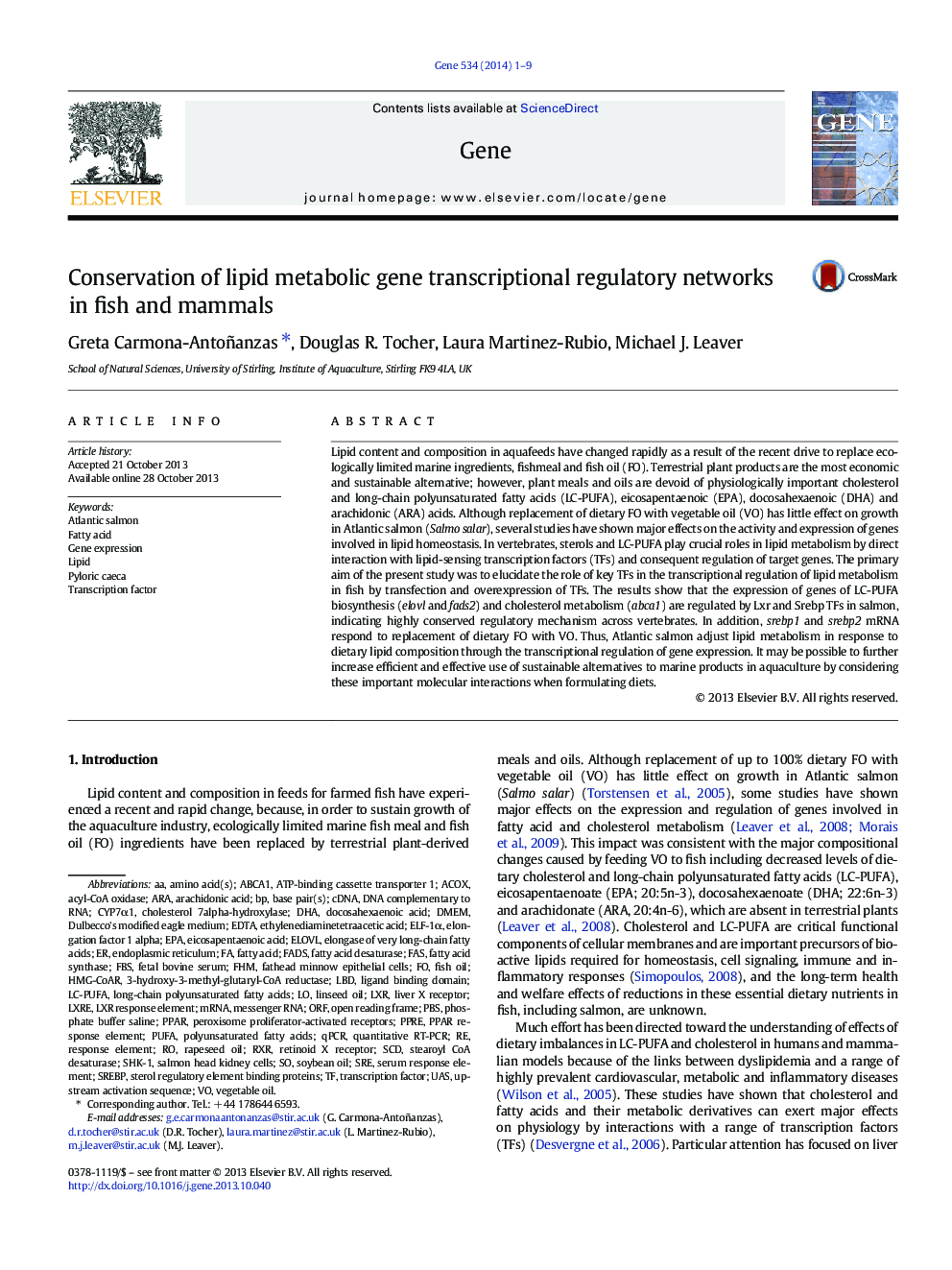| کد مقاله | کد نشریه | سال انتشار | مقاله انگلیسی | نسخه تمام متن |
|---|---|---|---|---|
| 2816763 | 1159951 | 2014 | 9 صفحه PDF | دانلود رایگان |
• Oxysterols, not cholesterol, activate salmon Lxr in a heterologous in vitro system.
• LXR mediates cross-regulation of cholesterol and fatty acid biosynthesis in salmon.
• SREBPs play a major role in the biosynthesis of EPA and DHA in salmon.
• Knowledge crucial to the optimization of sustainable aquaculture feeds
• Highly conserved transcriptional control of lipid biosynthetic genes in vertebrates
Lipid content and composition in aquafeeds have changed rapidly as a result of the recent drive to replace ecologically limited marine ingredients, fishmeal and fish oil (FO). Terrestrial plant products are the most economic and sustainable alternative; however, plant meals and oils are devoid of physiologically important cholesterol and long-chain polyunsaturated fatty acids (LC-PUFA), eicosapentaenoic (EPA), docosahexaenoic (DHA) and arachidonic (ARA) acids. Although replacement of dietary FO with vegetable oil (VO) has little effect on growth in Atlantic salmon (Salmo salar), several studies have shown major effects on the activity and expression of genes involved in lipid homeostasis. In vertebrates, sterols and LC-PUFA play crucial roles in lipid metabolism by direct interaction with lipid-sensing transcription factors (TFs) and consequent regulation of target genes. The primary aim of the present study was to elucidate the role of key TFs in the transcriptional regulation of lipid metabolism in fish by transfection and overexpression of TFs. The results show that the expression of genes of LC-PUFA biosynthesis (elovl and fads2) and cholesterol metabolism (abca1) are regulated by Lxr and Srebp TFs in salmon, indicating highly conserved regulatory mechanism across vertebrates. In addition, srebp1 and srebp2 mRNA respond to replacement of dietary FO with VO. Thus, Atlantic salmon adjust lipid metabolism in response to dietary lipid composition through the transcriptional regulation of gene expression. It may be possible to further increase efficient and effective use of sustainable alternatives to marine products in aquaculture by considering these important molecular interactions when formulating diets.
Journal: Gene - Volume 534, Issue 1, 15 January 2014, Pages 1–9
